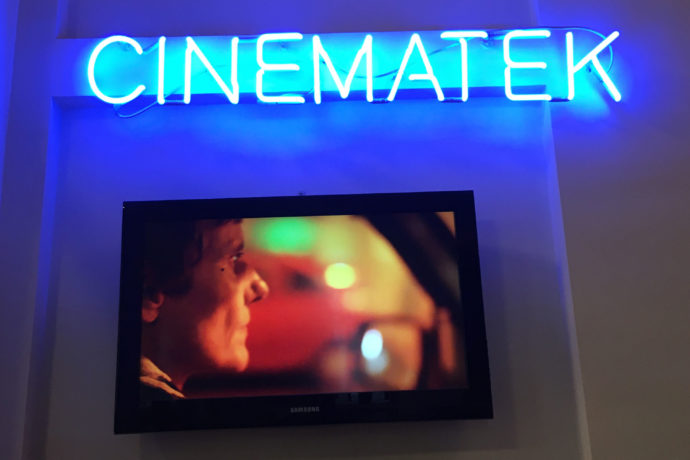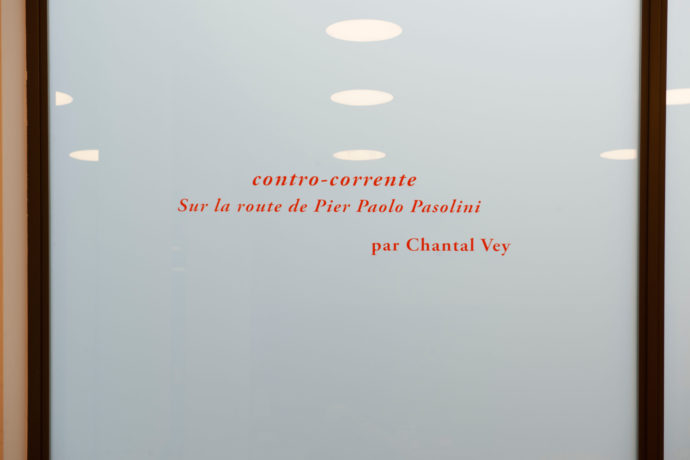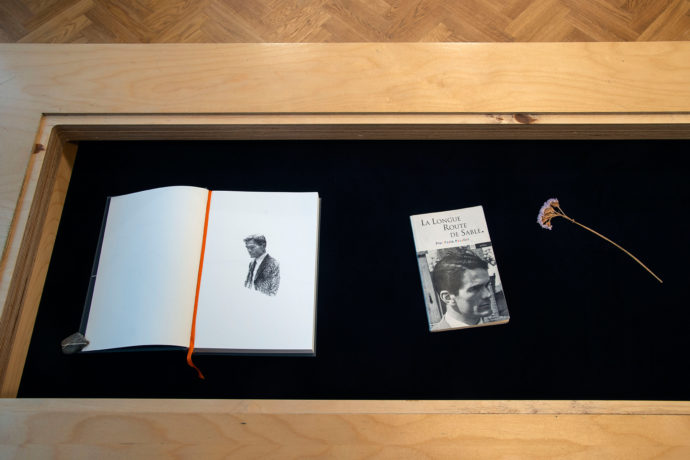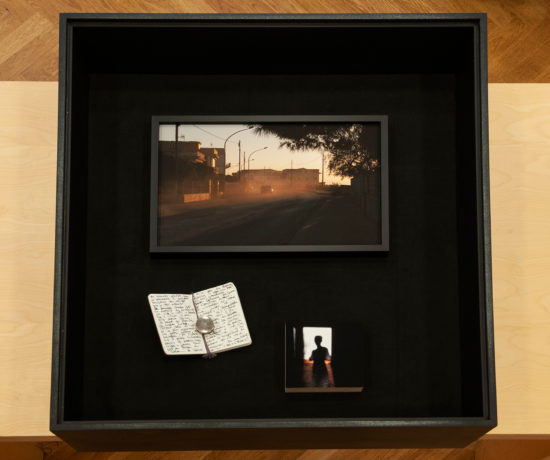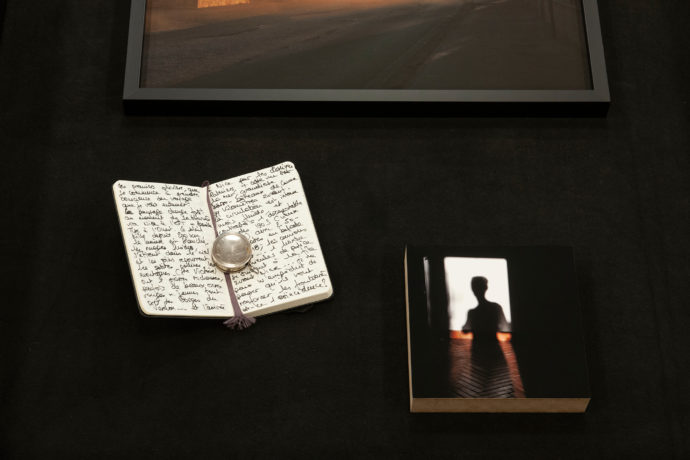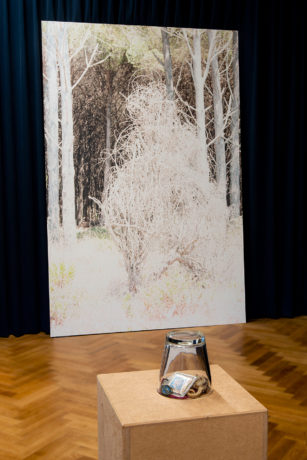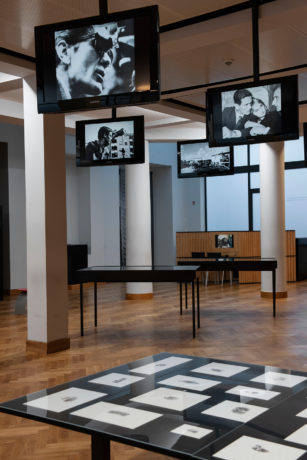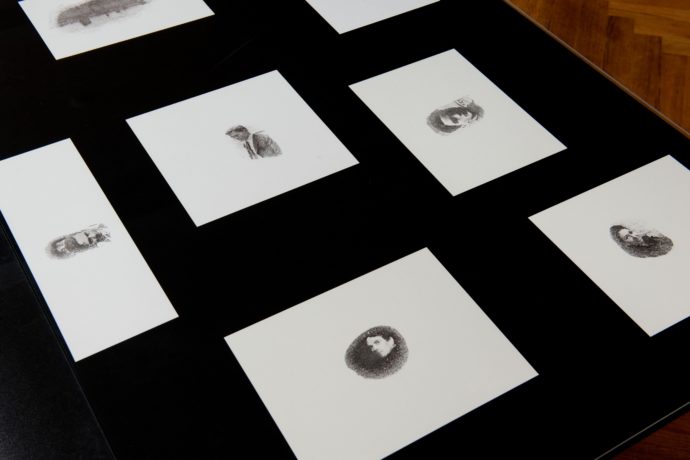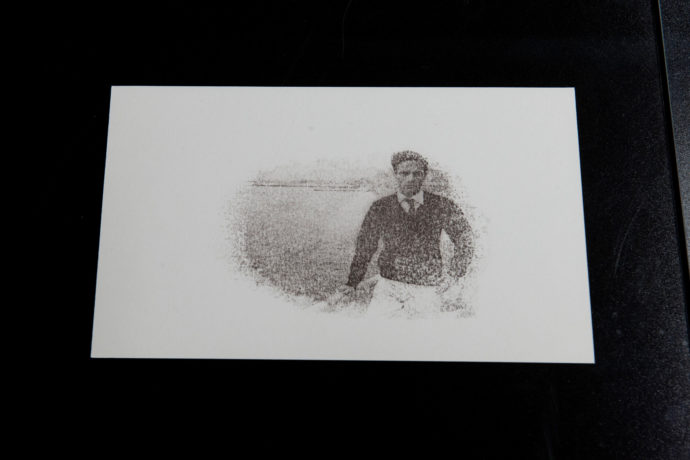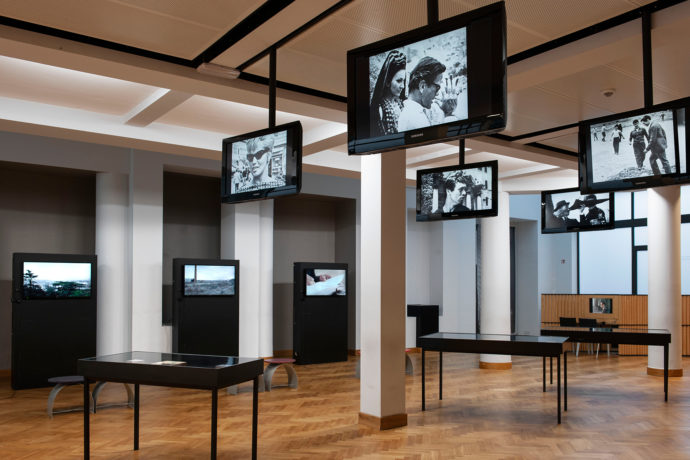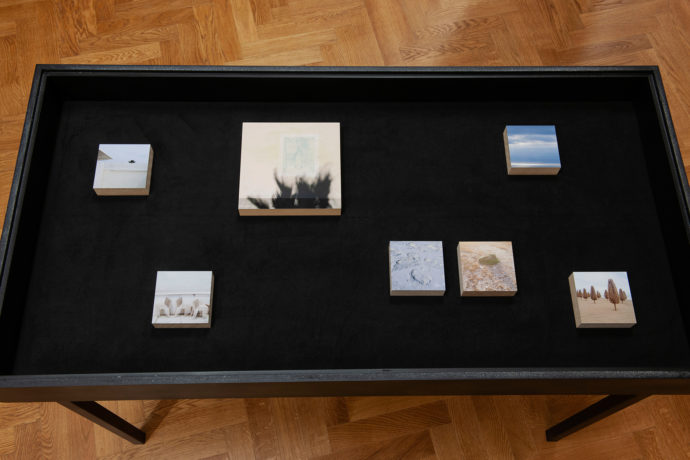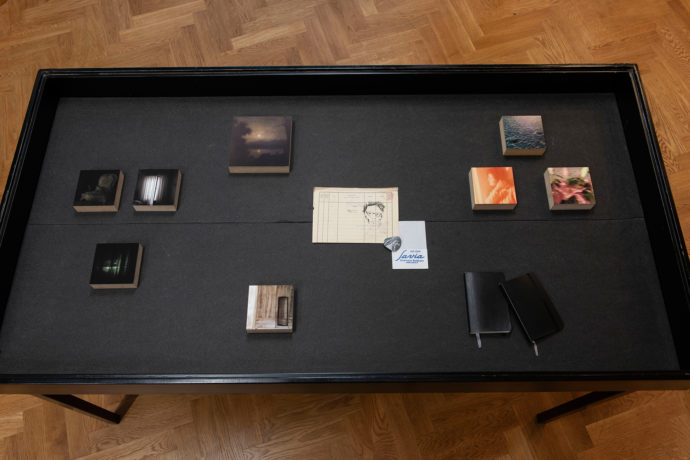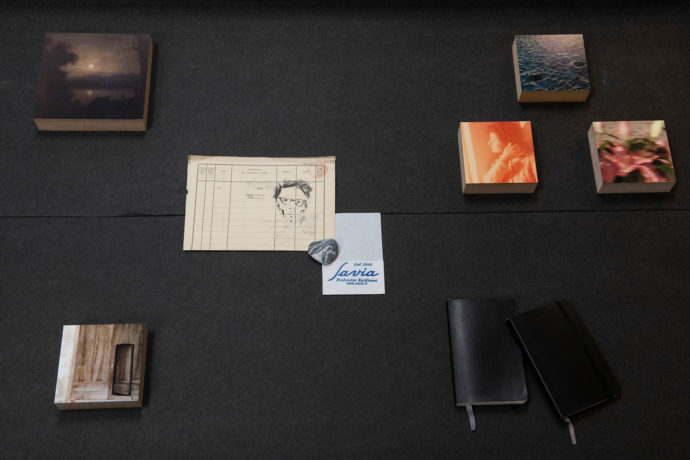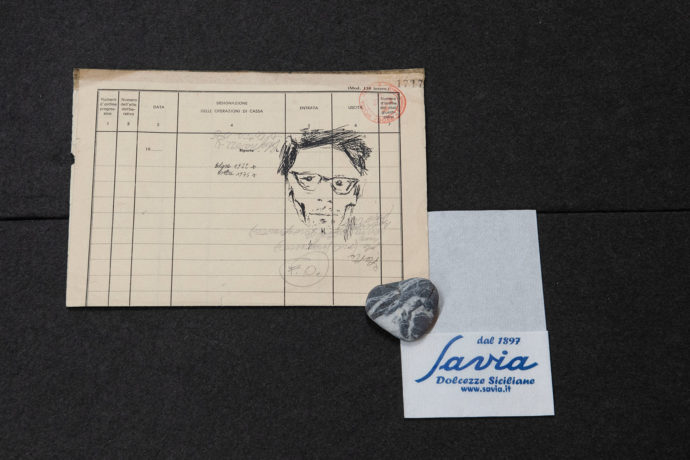•contro-corrente_Sur la route de Pier Paolo Pasolini
Exhibition contro-corrente_Sur la route de Pier Paolo Pasolini, Cinematek, Brussels, 04.03.2022 – 18.04.2022
Chantal Vey has produced a new synthesis of “contro-corrente” in a new book and in the form of an exhibition at CINEMATEK (curated by Maëlle Delaplanche), parallel to the Pasolini retrospective March-April 2022.
Contro-corrente is a set of three journeys undertaken by Chantal Vey along the Italian coast. Alone, at the wheel of her van, she undertook, between 2014 and 2017, three trips of several months.
Her itinerary repeats — in reverse, hence the title — the trajectory led by Pier Paolo Pasolini in the summer of 1959, following a commission from the large-circulation magazine, “Successo”. Published in three episodes, with photographs by Paolo di Paolo, Pasolini’s text was rediscovered in the 1990s under the title “The Long Road of Sand” .
The exhibition presents three videos of the “contro-corrente” cycle, the video “La Pineta di Cecina” (2016), documents, objects and photos as well as a set of Pasolini’s portrait prints made by at the Academia Belgica in Rome (2019).
“Chantal Vey’s focus on these travels and in her images is not the desire to follow in Pasolini’s footsteps, nor the will to investigate the sociological reality of the territories approached. What engages her is the road itself, the route along the seashore, the desire to stand on the edge. It is the road,” she writes, “that is the red thread in my life and in my work. It is the road that assigns a watchful posture, detached from known landmarks, sensitive to the slightest rustle, the slightest glint, the slightest clue, to the play of the wind, the surf, the shadow and the light.
Chantal Vey’s photography is not that of decisive moments, of great gestures, of crowds, of bodies, of action. It is a photography of waiting, of slow observation, a metonymic photography which states the intimate and collective cracks in the scars of a rock or the erosion of a wall, the knots and collapses through the voice of the folds of a fabric, the figures through their absence, history through its backlighting and ruins, heritage through its ghosts lurking in the shadows of a sanctuary, painting through its desire to exist in the movements of a cloud… When Chantal Vey captures light, it is from the shadows. When a figure appears in her videos, it is from behind, moving away, or passing by chance through one of the wide still shots that make up the sequences. If there are landscapes, they are abandoned parks, undergrowth, shady pine forests, gnarled forests that veil the view of a city. The skies are recurring features, misty, uncertain, punctured by the sun’s obstinacy. The sea represents the other side, rustling, stormy, oily, flat, grey, bluish. Changing…” Laurent Courtens, L’Art Même, n° 86, 1st Quarter 2022
“I don’t want to just tell my personal story, but to enable everyone to travel and to discover a story in their own way… This is why there is not one direction of visit to adopt but rather multiple clues to follow one’s own imagination.” Chantal Vey
“The Pineta di Cecina”, for example, was one of Pasolini’s favorite places, during his trip on “The Long Road of Sand”.
The visitor is invited to contemplate this view accompanied by the sound of the waves, from time to time Pasolini says in French :
“There is an inner infinity and an outer finish ; well,when I think of myself I think of something infinite.”* (from “Pasolini l’enragé”, Jean-André Fieschi, 1966).
Johan Vreys for Cinematek
En regard à la rétrospective des films de Pier Paolo Pasolini des mois de mars et avril 2022, CINEMATEK propose une exposition du travail de la plasticienne Chantal Vey (commissaire d’exposition : Maëlle Delaplanche). Cette exposition accompagne aussi la sortie du nouveau livre de l’artiste.
contro-corrente désigne un ensemble de trois parcours entrepris par Chantal Vey le long des côtes italiennes. Seule, au volant de sa camionnette, elle engage, entre 2014 et 2017, trois séjours de plusieurs mois, dont l’itinéraire répète – à rebours, d’où le titre — la trajectoire conduite par Pier Paolo Pasolini en été 1959, suite à une commande du magazine à grand tirage, Successo. Publié en trois épisodes, avec des photographies de Paolo di Paolo, le texte de Pasolini a été redécouvert dans les années 1990 sous le titre La longue route de sable .
L’exposition présente des archives filmiques, les trois vidéos du cycle contro-corrente, la vidéo La Pineta di Cecina (2016), des documents et photos, de même qu’un ensemble des empreintes de portraits de Pasolini réalisées par frottage à l’Academia Belgica (2019).
« Ce qui engage Chantal Vey dans ce chemin, ce n’est pas – initialement du moins — le désir de suivre les pas de Pasolini, ni la volonté d’investiguer la réalité sociologique des territoires approchés. Ce qui l’engage, c’est la route, le tracé en bordure de mer, le désir de se tenir en lisière.
« C’est elle, la route, écrit-elle, qui est le fil rouge, dans ma vie comme dans mon travail » .
C’est elle qui assigne une posture d’affût, détachée des repères connus, sensible au moindre bruissement, au moindre éclat, au moindre indice, aux jeux du vent, du ressac, de l’ombre et de la lumière.
La photographie de Chantal Vey n’est pas celle des instants décisifs, des grands gestes, des foules, des corps, de l’action. C’est une photographie d’attente, d’observation lente, une photographie métonymique qui énonce les fissures intimes et collectives à l’appui des cicatrices d‘une roche ou de l’érosion d’un pan de mur, les nœuds et affaissements par la voix des plissés d’un tissu, les figures par leur absence, l’histoire par ses contrejours et ses ruines, le patrimoine par ses fantômes tapis dans l’ombre d’un sanctuaire, la peinture par son désir d’exister dans les mouvements d’un nuage… Quand Chantal Vey capte la lumière, c’est depuis l’ombre. Quand une figure apparaît dans ses vidéos, c’est de dos, s’éloignant, ou défilant par hasard au travers d’un des larges plans fixes composant les séquences. S’il est des paysages, ce sont des parcs délaissés, des sous-bois, des pinèdes ombragées, des futaies noueuses voilant la vue d’une ville. Quelques amplitudes sur des coteaux fertiles tout de même. Les cieux aussi, brumeux, incertains, crevés par l’obstination solaire. Annonces plus qu’éclats. La mer bientôt, bruissante, houleuse, huileuse, étale, grise, bleutée. Changeante…»
Laurent Courtens, L’Art Même, n° 86, 1er Quadrimestre 2022
« Je ne veux pas raconter seulement mon histoire, mais que chacun puisse voyager et découvrir une histoire à sa façon… ce pourquoi il n’y a pas un sens de visite à adopter mais plutôt son propre imaginaire à suivre au fil des indices. » Chantal Vey
La Pineta di Cecina par exemple fut l’un des lieux favoris de Pasolini, lors de son voyage sur La longue route de sable. Le visiteur est invité à contempler cette vue accompagnée du son des vagues, et de temps en temps Pasolini y dit en français :
“Il y a un infini intérieur et un fini extérieur ; eh bien quand je pense à moi même je pense à quelque chose d’infini.” (extrait de Pasolini l’enragé, Jean-André Fieschi, 1966.)
Johan Vreys pour Cinematek
